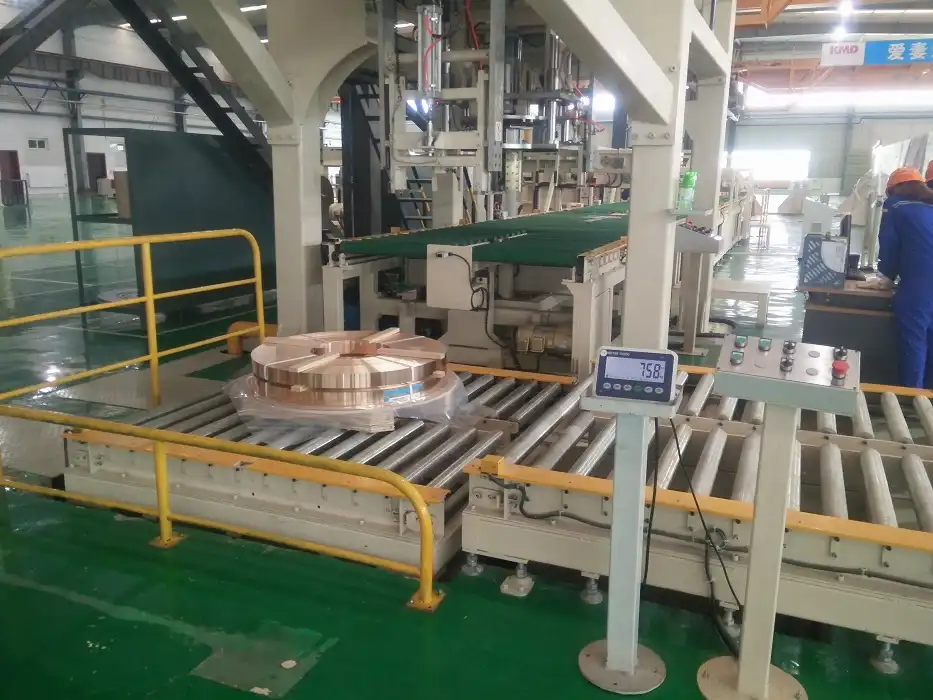The Environmental Impact of Steel Coil Packaging: Sustainable Solutions
Steel coil packaging poses significant environmental challenges due to its reliance on non-biodegradable materials. Addressing these challenges is crucial to promoting sustainability in manufacturing and packaging industries. Steel coil packaging impacts the environment mainly through the use of plastic wraps and steel strapping, neither of which readily decompose. Developing sustainable alternatives offers the potential to significantly reduce this environmental burden.

Exploring sustainable solutions for steel coil packaging can help reduce plastic waste and energy consumption. Transitioning to eco-friendly materials and innovative packaging techniques ensures future industry growth aligns with environmental responsibility. This is an exciting time for change, and the potential benefits extend far beyond immediate environmental impacts.
1. What are the environmental challenges of steel coil packaging?
Steel coil packaging heavily contributes to environmental degradation due to excessive plastic waste. The need for improved packaging materials and methods is urgent. The environmental challenges predominantly include high plastic waste, non-recyclable packaging materials, and increased carbon footprint due to traditional methods. These factors urge the industry to adopt sustainable practices and innovate alternative solutions.

Understanding the Environmental Issues
Steel coil packaging involves materials that are not eco-friendly, such as plastic films and metal straps. These are often disposed of improperly, contributing to pollution. The most pressing issue is the overuse of these materials, which harms ecosystems. Not only are these materials hard to decompose, but their production also consumes significant resources, increasing the carbon footprint.
To delve deeper, let's examine key challenges:
| Challenge | Explanation | Impact |
|---|---|---|
| High Plastic Use | Overreliance on non-biodegradable wrap materials. | Long-lasting environmental damage. |
| Non-Recyclable Materials | Difficulty in reprocessing used packaging. | Increased waste sent to landfills. |
| Resource-Intensive Production | High energy demands for making materials. | Elevated greenhouse gas emissions. |
When I first entered this field, I observed how traditional practices overlooked sustainability. The landscape is different now. Many companies are adopting changes by switching to biodegradable materials and investing in research. The push toward sustainability has made addressing these longstanding problems not just feasible but necessary.
Embracing these green alternatives requires a commitment to redesign processes and educate stakeholders on long-term benefits. The transition might seem challenging now, but the positive impacts will undoubtedly reverberate through the supply chain, from manufacturers to end-users.
2. How can sustainable materials improve steel coil packaging?
Packaging impacts customer satisfaction and sustainability. Addressing these efficiently with sustainable materials offers a unique opportunity for considerable business transformation.
Sustainable materials in steel coil packaging reduce waste, enhance recyclability, and offer eco-friendly benefits. They ensure efficient protection and structural integrity, reinforcing brand reputation by reducing environmental impacts.

Benefits of Sustainable Materials in Steel Coil Packaging:
Using sustainable materials in steel coil packaging shifts the focus from traditional practices to innovative and eco-friendly solutions. It's not just about reducing waste, but also about enhancing the efficiency and sustainability of operations. These materials often come with reduced carbon footprints, thus promising greener operations.
| Aspect | Traditional Materials | Sustainable Materials |
|---|---|---|
| Environmental Impact | High | Low |
| Cost Efficiency | Variable | Improved with scale |
| Recyclability | Limited | High |
| Strength and Durability | Subject to materials | Optimized for purpose |
Moreover, sustainable materials can improve the logistics chain by ensuring products maintain integrity and arrive safely. They reduce the potential for damage during transit, and, therefore, improve customer satisfaction. Additionally, operational costs may decrease through the reuse of materials, improved resource efficiency, and streamlined waste management processes. As environmental awareness grows, businesses adopting these solutions not only improve their operational efficacy but also align with public sentiment, leading to better brand positioning.
3. What are the current advancements in sustainable packaging technologies?
Sustainable packaging significantly influences consumer choices and environmental health. Understanding recent advancements enables smarter decisions and greener practices.
Recent advancements in sustainable packaging technologies include biodegradable materials, smart packaging solutions, and reduced energy consumption innovations. These help balance environmental responsibility with operational efficiency.

Emerging Trends in Packaging Technologies
In recent years, technological advancements have revolutionized sustainable packaging. The focus has shifted to not just the material but also the technological processes that support sustainability. Let's explore these trends:
| Innovation | Description | Benefits |
|---|---|---|
| Biodegradable Packaging | Using materials that degrade naturally | Reduces landfill impact |
| Smart Packaging | Embedding sensors for data collection | Enhances supply chain management |
| Energy-Efficient Production | Reducing energy use in manufacturing processes | Lowers operational costs |
Biodegradable packaging materials help reduce waste and support ecological transitions by naturally returning to the environment post-use. Smart packaging integrates tech to monitor condition and location, which is essential for perishable items or fragile goods. Energy-efficient production reduces costs and carbon emissions, making any company more appealing to eco-conscious stakeholders. Implementing these technologies demonstrates a commitment to sustainability, which is essential as regulatory pressures and consumer expectations in environmental responsibility continue to grow.
Conclusion
Adopting sustainable packaging strategies for steel coils is crucial. It decreases environmental impacts, improves supply chain efficiency, and showcases a commitment to industry-wide ecological responsibility. Emphasizing these strategies ensures not just economic profitability but also environmental stewardship, paving the way for a sustainable future.
Emphasize the importance of adopting sustainable packaging strategies for steel coils to mitigate environmental impacts and promote industry-wide ecological responsibility.
